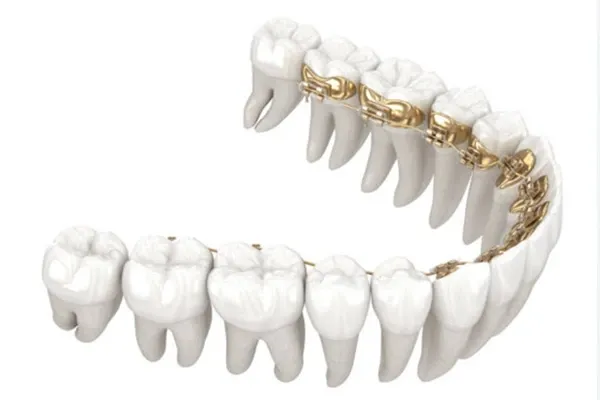What Are Lingual Braces and How Do They Correct an Overbite?
If you're exploring orthodontic options and want something discreet yet powerful, lingual braces may be just what you need. Whether you're a working professional, a college student, or someone who prefers a more aesthetic solution to traditional braces, lingual braces offer a unique combination of effectiveness and subtlety.
But what exactly are lingual braces? How do they work to correct issues like an overbite? And are they really worth the investment? Let’s walk through everything you need to know to decide whether this treatment suits you.
What Are Lingual Braces?
Lingual braces are similar in function to traditional metal braces but differ in one major way: they are placed on the inner side of your teeth, facing the tongue. Because of this placement, they're completely invisible from the front. This means that when you smile, speak, or take a selfie, no one can see them, making them a popular choice for adults and image-conscious teens.
Each bracket used in lingual braces is custom-made to fit the back of your teeth. These brackets are connected with a wire, just like traditional braces, and they apply continuous gentle pressure to move your teeth into the desired position over time.
While they offer a discreet alternative to traditional braces, lingual braces are not a one-size-fits-all solution. Their design and placement require more technical expertise from your orthodontist, and they’re typically used for people who are particularly concerned about aesthetics.

Why Treatment Is Necessary for Overbite
Before we dive into how lingual braces correct an overbite, it’s important to understand what an overbite actually is. An overbite, sometimes referred to as a deep bite, is when the upper front teeth excessively overlap the lower front teeth. A certain degree of overbite is normal, but when it's too deep, it can cause several issues.
Some of the complications associated with a severe overbite include:
- Jaw pain and discomfort
- Speech difficulties
- Difficulty chewing food
- Worn-down tooth enamel
- Increased risk of gum damage and tooth injury
- TMJ disorders
While mild overbites may not need treatment, moderate to severe cases often require orthodontic intervention. A deep overbite can lead to long-term dental health problems if left untreated. Fortunately, lingual braces offer a discreet and effective solution.
How Lingual Braces Correct an Overbite
Like traditional braces, lingual braces work by gradually shifting teeth into proper alignment. When it comes to correcting an overbite, your orthodontist will use the lingual braces to:
- Move the upper front teeth backwards
- Shift the lower front teeth forward
- Adjust the position of molars to stabilize the bite
- Balance pressure between upper and lower jaws
Because lingual braces are bonded behind the teeth, they allow for precise control of tooth movement, especially in cases involving vertical corrections like deep bites. Advanced 3D scanning and customized bracket systems also enable orthodontists to plan every movement in detail, essential for correcting bite issues.
The result is a healthier bite, improved facial profile, and reduced risk of long-term complications. And the best part? You can undergo this transformation without anyone knowing you’re wearing braces.
Lingual Braces Advantages
The appeal of lingual braces extends beyond their invisibility. Here are some of the most compelling benefits that make them a popular choice:
Aesthetic Confidence
Whether you’re attending business meetings or social events, lingual braces won’t interfere with your appearance. This makes them especially attractive to adults who want to maintain a professional image.
Effective for Complex Cases
Lingual braces can handle complex tooth movements, including correcting deep overbites and spacing issues. They offer similar mechanical capabilities to traditional braces, making them suitable for even challenging cases.
No Risk of Visible Discoloration
Since the brackets are placed on the back of your teeth, there’s no risk of white spots or discoloration showing on the front surfaces, which can sometimes happen with traditional braces.
Better Protection in Contact Sports
For athletes, especially those involved in contact sports, having braces on the back of the teeth reduces the risk of injury to lips and cheeks.
Customized Fit
Each bracket is designed specifically for the shape and contours of your teeth, making the treatment more precise and often more comfortable.
Lingual Braces Cost
One of the most common questions patients ask is about the cost of lingual braces. They indeed tend to be more expensive than traditional braces or clear aligners like Invisalign. The higher cost is due to several factors:
- Custom-made brackets for each tooth
- Specialized equipment and techniques
- Increased chair time for placement and adjustments
- Additional training and certification for orthodontists
It’s worth discussing insurance coverage. Some dental insurance plans partially cover orthodontic treatment, though lingual braces may not always be included. Be sure to verify with your provider.
How Long Does the Lingual Braces Treatment Take?
Treatment time with lingual braces varies based on your individual needs. For mild to moderate overbites, the process takes about 12 to 18 months. For more severe cases, it may extend to 24 months or longer.
Factors influencing the treatment duration include:
- Severity of the overbite
- Patient age and oral health
- How consistently you follow care instructions
- Frequency of orthodontic appointments
Regular visits to your orthodontist are crucial for monitoring progress and making adjustments. Keeping up with appointments can also prevent delays in your treatment timeline.
Lingual Braces Care
Proper care is essential to ensure effective treatment and avoid complications. Because of their placement behind the teeth, lingual braces require a slightly different cleaning routine.
Here are some tips to help you take care of them:
Brush After Every Meal
Food can easily get stuck around the brackets, so it’s important to brush thoroughly using a soft toothbrush or electric brush.
Floss Daily
Use floss threaders or a water flosser to clean between your teeth and around the brackets. This helps prevent plaque buildup and gum disease.
Rinse with Mouthwash
An antibacterial mouthwash can help reduce the risk of infection and maintain overall oral hygiene.
Avoid Hard or Sticky Foods
Foods like popcorn, nuts, caramel, and chewing gum can damage the brackets or wires. Stick to softer foods whenever possible.
Use Orthodontic Wax
If your tongue feels sore or irritated, orthodontic wax can provide temporary relief by covering the sharp edges of the brackets.
Stay Consistent with Checkups
Missing appointments can delay your progress. Make sure to attend all scheduled visits so your orthodontist can make timely adjustments.
With good hygiene and discipline, lingual braces can transform your smile while remaining practically invisible throughout the process.

Are Lingual Braces Right for You?
Lingual braces are a fantastic option for many patients, especially those who want effective orthodontic treatment without the appearance of traditional braces. However, they’re not ideal for everyone. Here are a few factors to consider:
- If you have very small teeth or a small jaw, fitting brackets behind your teeth may be challenging.
- If you have severe bite issues or certain jaw misalignments, another type of treatment might be more effective.
- If budget is a concern, traditional braces or clear aligners might offer a more cost-effective solution.
A qualified orthodontist will evaluate your case and help you decide the best course of action. They’ll assess your dental health, bite alignment, and aesthetic goals to determine whether lingual braces are suitable for you.
Final Thoughts
Lingual braces offer a powerful, invisible solution to correcting overbites and achieving a straighter, healthier smile. While they may come at a higher cost and require a short adjustment period, the benefits often outweigh the drawbacks, especially if you’re looking for a treatment option that doesn’t compromise your appearance.
From understanding how they work to knowing what to expect during treatment, you’re now equipped with the knowledge to make an informed decision. If discretion, customization, and effective results matter to you, it’s worth speaking with your orthodontist about whether lingual braces are the right choice.
Contact your Danville dentist, Dr. Hoss Abar, DDS, MSD, at Danville Orthodontics to learn more about How Diet Influences Oral Health: Tips for Danville Families.
Resource:
How to care for your Invisalign Aligners?
Neither this nor any other content in this media is meant to prescribe, recommend, or prevent any treatment or procedure. We highly suggest that you get the advice of a qualified dentist or other medical practitioners regarding your specific dental condition.
What Are Lingual Braces and How Do They Correct an Overbite?
